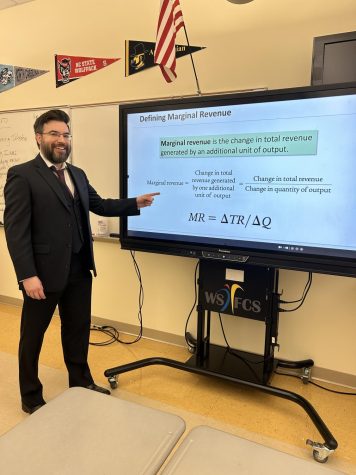Trump’s National Emergency
March 23, 2019
 National Emergencies are defined as “states of emergencies resulting from a danger to a nation from foreign or domestic sources.” as stated by the Merriam-Webster dictionary. Since 1976, 58 national emergencies have been declared and 31 of those emergencies are still in effect today. George W. Bush issued 12 National Emergencies in his presidency and Barack Obama issued 13 in his. As of the end of 2018, Donald Trump has issued three.
National Emergencies are defined as “states of emergencies resulting from a danger to a nation from foreign or domestic sources.” as stated by the Merriam-Webster dictionary. Since 1976, 58 national emergencies have been declared and 31 of those emergencies are still in effect today. George W. Bush issued 12 National Emergencies in his presidency and Barack Obama issued 13 in his. As of the end of 2018, Donald Trump has issued three.
But on February 15, President Trump declared a National Emergency to allocate funds for a wall on the Southern Border after a 35 day government shutdown and an agreement in the House for a spending bill of $1.375 billion for the border wall. He claims there is a crisis at the southern border and there needs to be more funding for the wall. Trump originally wanted $5.7 billion to build the wall.
“Congress does not want Trump to use money for the wall that they have not approved,” history teacher Troy Colvard said. “Setting tax rates and the federal budget is a power given to Congress in article one of the Constitution.”
The National Emergencies Act of 1976 allows Presidents to declare national emergencies under certain conditions. These conditions would include states of emergencies such as an epidemic, war with another country or an attack on American soil.
Democrats in the House are saying that the crisis on the southern border is not considered a “National Emergency” and does not want the President to bypass the spending bill passed by congress. Instead, they proposed a bill to veto Trump’s emergency and voted on that bill on February 25. The vote on the bill to stop the President’s national emergency ended up with all House Democrats and 13 House Republicans voting against Trump’s emergency, making it a 245-182 vote. Trump may issue his first veto against the vote to keep the emergency spending for the wall. There is also tension in the Senate over Republicans saying they are against the declaration and say they will vote against it.
“Congress does not want him to get all the money that he wants because they don’t see the illegal activity on the southern border as important as he does,” sophomore Charles Dillon said. “He knows it is killing the economy and he is trying to solve the unemployment problem in America, as he promised to do when he took the job as President.”
Even 16 states are filing a lawsuit against Trump for declaring a national emergency. These states include California, New York, Colorado, Connecticut, Delaware, Hawaii, Illinois, Maine, Maryland, Michigan, Minnesota, Nevada, New Jersey, New Mexico, Oregon and Virginia. Most of these states are majority Democrat states. Two of which are located on the southern border.
“I think it is a great example of checks and balances,” Colvard said. “I think the states will argue in court that the southern border is not a true emergency. Many states are arguing that what Trump is doing is unconstitutional.”
Photo courtesy of Creative Commons












